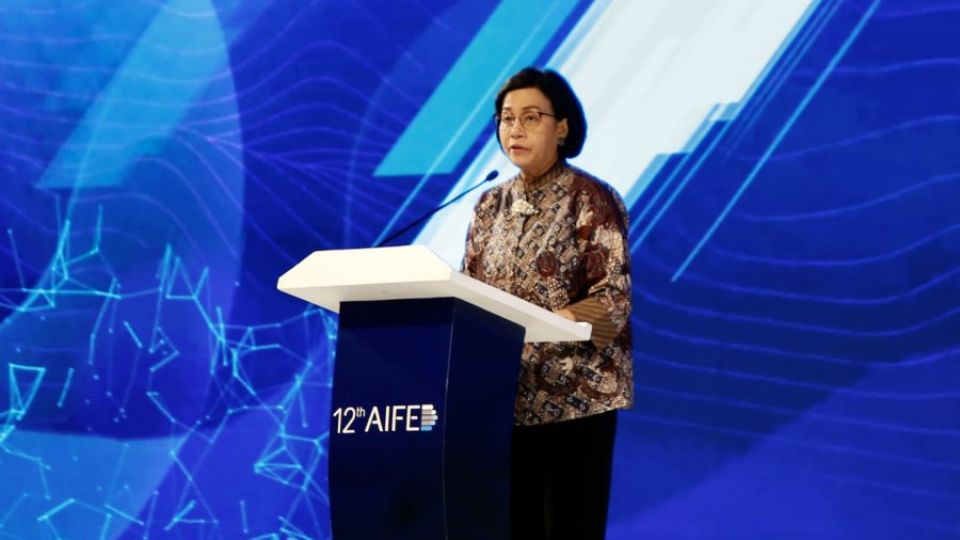September 25, 2024
JAKARTA – The World Bank has thrown cold water on Indonesia’s dream of becoming a high-income economy by 2045 and outlined some of the challenges middle-income countries face in making such a leap.
According to government planning, achieving that target in time for Indonesia’s centenary of Independence would require annual gross domestic product growth of 6 to 7 percent over the next 20 years.
“For middle-income countries to have high income in decades rather than centuries, it would need a miracle,” World Bank Group chief economist Indermit Gill said on Monday at a seminar held at the Finance Ministry’s Dhanapala Building in Jakarta titled ASEAN Economic Development and the Middle-Income Trap.
While acknowledging the country’s strong economic growth, Gill pointed out that the road ahead would be tougher for Southeast Asia’s biggest economy.
Since the 1970s, per-capita income in many middle-income countries has stagnated at a fraction of the United States level, according to the World Bank’s World Development Report 2024 titled Middle Income Trap that was published last month.
The report found “that as countries grow wealthier, they usually hit a ‘trap’ at about 10 percent of annual US GDP per person – the equivalent of US$8,000 today.”
Of the relatively small number of countries that have managed to achieve high-income status since 1990, more than a third were either beneficiaries of integration into the European Union or of previously undiscovered oil.
Currently, 108 economies that are home to three-quarters of the global population fall into the middle-income category with per-capita income ranging from $1,136 to $13,845, and they face serious challenges in their efforts to become high-income countries, the report states, such as aging populations, trade fragmentation, environmental crises and rising government debt.
While acknowledging Indonesia’s intention to support its public sector, Gill said the country did not perform well in regulatory and operational efficiency.
“It’s not that Indonesia isn’t heading toward the right direction, but the pace of reform is stalling compared to countries that have managed this transition successfully,” he noted, adding that the country’s growth pace lags that achieved in the past by China and South Korea.
The economist highlighted the development history of South Korea, which transited from a low-income to high-income country in just 25 years, as “required reading for policymakers in any middle-income country.”
To escape the middle-income trap, the World Bank recommended Indonesia adopt the “3i” policy—investment, technology infusion and innovation—with South Korea cited as a successful example.
Indonesia’s progress was evident in certain foundational reforms, Gill said, particularly in areas like infrastructure, governance and macroeconomic stability.
On the other hand, the country lags in market efficiency reforms, which he deemed essential for further progress.
Areas “like finance, labor, trade, competition and business regulation are on the agenda for Indonesia [to reform] to sustain its growth,” Gill continued. “That’s a big [reason] why Indonesia has slow productivity growth.”
Currently classified as an upper-middle-income economy with a GDP per capita of around $5,200, Indonesia aims to raise this figure to between $19,000 and $22,000 by 2045 to achieve high-income status.
The country’s middle class, now comprising approximately 52 million individuals or 18.8 percent of the population, would be expected to grow substantially, with the government targeting this demographic to account for around 80 percent of the population by 2045.
Household spending remains the primary driver of the country’s GDP, accounting for more than half of total economic output.
SOEs crowding out private investors
But to meet its lofty 2045 targets, the country must also address structural challenges and accelerate regulatory reforms, Gill said.
State-owned enterprises (SOEs) dominating markets was one of the country’s major obstacles to climbing up the income ladder, Gill said.
While SOEs “aren’t inherently negative,” Gill said, their overwhelming presence in the economy could crowd out private enterprises, leaving less room for competition.
Indonesia has the highest economywide public ownership score among large middle-income economies, according to the World Bank report, indicating a strong presence of SOEs and weaker governance frameworks that stifle competition.
Maria Vagliasindi, the World Bank’s lead economist for infrastructure, emphasized at the same event that middle-income countries needed to regulate incumbents—such as market leaders, SOEs and elites—who often abuse their influence.
“You need to build regulatory institutions to limit the power of incumbents who use their position to block competitors,” she said.
Government strategy
Finance Minister Sri Mulyani said that Indonesia “must avoid the middle-income trap” with proper management of the state budget, particularly in funding digital infrastructure and improving human capital, for the country to achieve high-income status by 2045.
However, she also cautioned that “the middle-income trap typically shows up as regulations that make the economy more difficult, ultimately complicating people’s lives,” she said.
The head of the ministry’s Fiscal Policy Agency, Febrio Kacaribu, added that the government will rely on industrialization for economic growth, focusing on the manufacturing sector while boosting the services sector as a catalyst, especially in high-value industries like electronics, data centers and semiconductors.
“Manufacturing still has much higher value-added potential, giving us bigger bang for the buck,” Febrio explained, noting however that the sector had to go through a transformation first.
A downturn in the country’s manufacturing sector intensified in August with the purchasing managers’ index (PMI) dropping to 48.9 from a reading of 49.3 in July, according to an S&P Global report.
Deputy Finance Minister Thomas Djiwandono said on Tuesday at the same seminar that the incoming administration under president-elect Prabowo Subianto, who is slated to take office in October, would prioritize education, health, food and energy security for the transition to a high-income economy.
“Commercially viable projects will be pursued by public-private partnerships with the state budget to focus on addressing long-term welfare needs,” he said. “Achieving the ambitious 8 percent growth is not a dream, but a necessity.”


